Sometimes, the call of the wild can take us to isolated and high-risk environments – be that for adventure, or because we’ve got a job to do! We always hope and even assume that things will go smoothly – but being prepared with the right gear is essential. Let’s consider our worst-case scenario, and how we can best respond in an emergency situation.
Distress beacons, like PLBs, are a reliable way to alert the authorities – but how exactly do these devices work?
What are Satellite Messengers? Are they the same as a beacon? If not, how are they different?
In this blog, we dive into the what, where, why, and how, collating the answers to some of the most frequently asked questions. Plus, we unpack these getaway gadgets even more in Episode 49 of the Snowys Camping Show.

When adventure calls, it’s best to be prepared for an emergency with either a Satellite Messenger or PLB. Image: ZOLEO
The 4 Types of Emergency Beacons:
- PLB – Personal Locator Beacons. These are used by adventurers and workers in remote high-risk environments.
- EPIRB – Emergency Position Indicating Radio Beacons, used in marine operations beyond two nautical miles from shore.
- ELT – Emergency Locator Transmitters, used in aircraft.
- Satellite Messenger – Similar to PLBs, used by adventurers but operational via an independent/private network. They also allow for messaging in non-life-threatening situations.
EPIRBs and ELTs are specific to marine and air operations respectively, designed to be installed and registered to the vessel.
PLBs and Satellite Messengers are commonly used for land-based activities and are designed to be worn on the person – used by an individual, and the primary focus of this article.
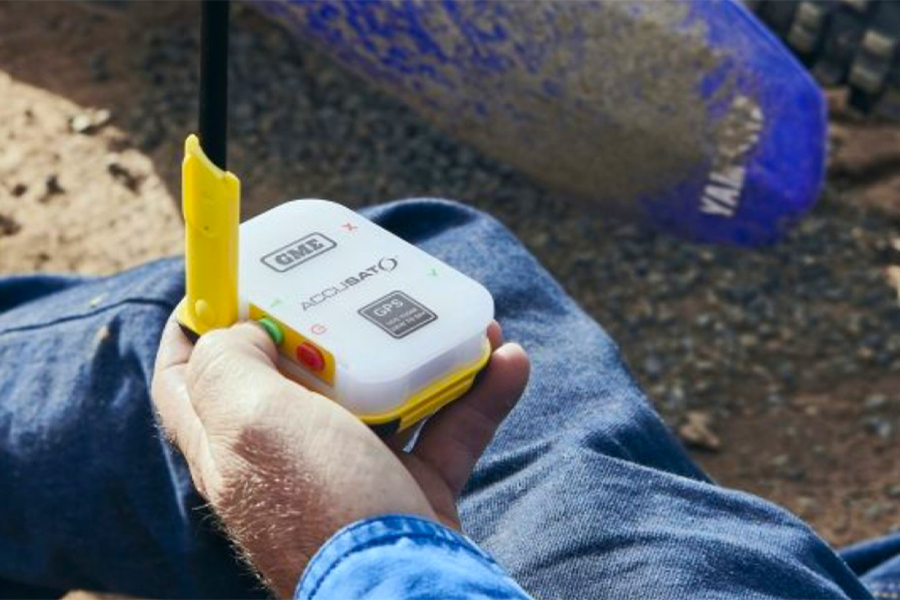
All PLBs use the global COSPAS-SARSAT network. Image: ACR
What is a PLB?
A Personal Locator Beacon is a small, pocket-sized beacon that uses satellite technology to relay a message from your location on the ground or water, to search and rescue crews. They’re designed to be used as a last resort when all other means of communication are exhausted and you are in both immediate and grave danger. When we say ‘grave’ danger, we mean a life-or-death situation. Running out of fuel or getting lost on the trail does not warrant the use of a PLB.
Nowadays, most of these devices are GPS-enabled and send out an emergency distress signal, including your GPS coordinates, to the relevant rescue authority. The distress signal sent out by a PLB is 406 MHz. This special frequency is used just for search and rescue operations, and communicates with a network of international military satellites called COSPAS-SARSAT. This network is made up of American, Russian, Canadian, and French satellites.
When you activate your beacon, your GPS location and the unique code relevant to your beacon will be transmitted to a rescue coordination centre via satellite. The nearest rescue services will then be notified.
Older model PLBs used the 121.5 MHz frequency, however this is no longer detected by satellite and these models are no longer licensed for use. The Ocean Signal RescueMe PLB1 is an exception.
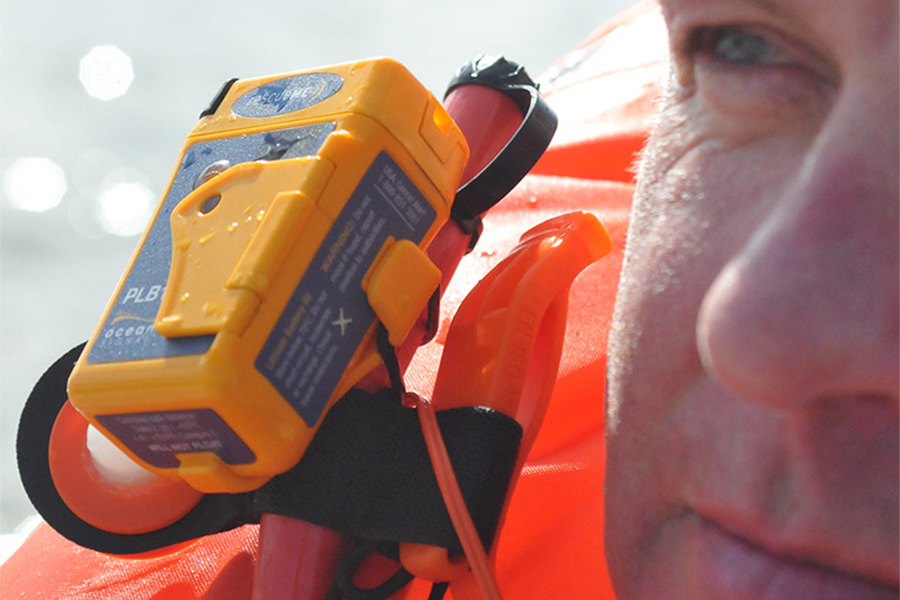
The Ocean Signal RescueMe PLB1 is the smallest PLB currently available. Image: Ocean Signal
Ocean Signal RescueMe PLB1
The Ocean Signal RescueMe PLB1 uses three methods to communicate your location:
- The 406 MHz network communicates to the satellites.
- The 121.5 MHz homing capability is used to aid search and rescue with your location.
- A high-density flashing strobe acts as a visual aid.
The RescueMe PLB1 is marketed towards kayakers, SUPers, or recreational boaties. It’s proven popular with these water sport enthusiasts on adventures within two nautical miles offshore. They also float, have single handed activation, and are waterproof to 15-metres for 1-hour – if you do happen to go overboard your device will still operate, just be sure to have it clipped to you or your life vest!
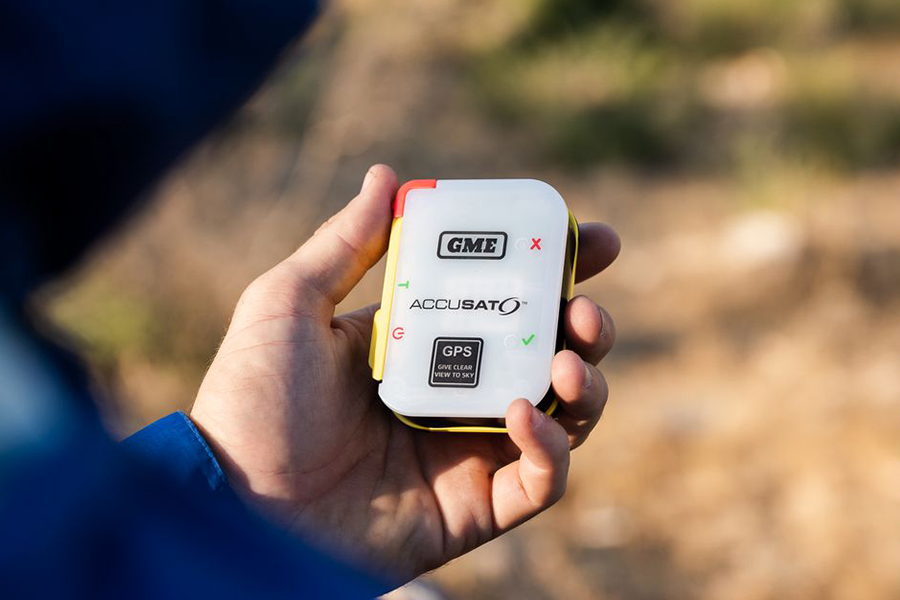
The Accusat MT610G GPS PLB has a smooth, modern design. Image: GME
GME Accusat MT610G GPS PLB
The GME Accusat MT610G GPS PLB uses three methods to communicate your location:
- The 406 MHz network communicates to the satellites
- The 121.5 MHz homing capability is used to aid search and rescue with your location
- A high-density flashing strobe acts as a visual aid
Made by Australias leading manufacturer of PLBs and EPRIBs, the Accusat MT610G has a sleek, rugged and waterproof design. Its simple 2 stage operation makes it ideal for adventurers, outdoor enthusiasts, and professionals working in remote areas.
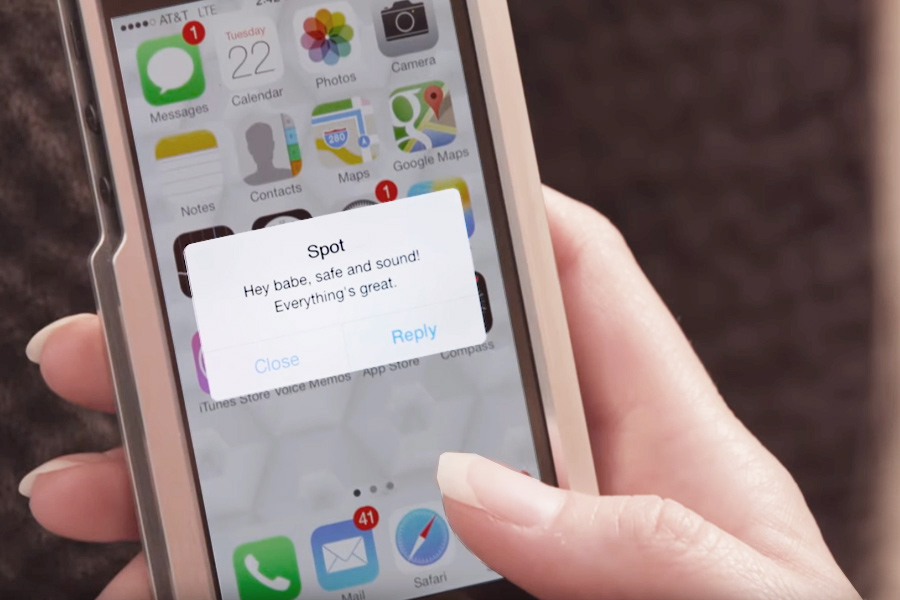
A Satellite Messenger can be pre-programmed with messages for friends and family. Image: Spot
What is a Satellite Messenger?
Instead of the government-run COSPAS-SARSAT system, Satellite Messengers operate via private or independently run networks that own commercial satellites.
Both SPOT and ZOLEO have partnered with the private network GEOS International Emergency Response Coordination Center (IERCC). Once an SOS is activated, an alert is sent directly to GEOS IERCC who will notify the relevant authorities based on your GPS location and emergency situation.
Think of SPOT and ZOLEO like private companies that offer a more tailored service. This also means that you will have to pay some sort of plan or subscription fee.
A Satellite Messenger device provides additional communication features too, and ideal for people who want the option to say something more than just I’m in danger, send help!
SPOT Satellite Messengers are rugged yet compact and ideal for lightweight adventures. Image: Spot
SPOT
Along with SOS, the SPOT Gen4 allows you to communicate with your friends and family when out of range. You can pre-program custom messages that include your GPS coordinates to let them know that you’re safe, or that you need assistance but are not in serious danger. You can also show your tracking waypoints on your online account, so your friends and family can monitor your progress.
The SPOT X 2-Way features the same SOS function, but includes Bluetooth capabilities. By using the SPOT X app to connect the device to your smartphone, you can exchange messages as you go instead of relying on pre-programmed texts and emails. The X 2-Way also allows you to navigate using the built-in compass and programmable waypoints.
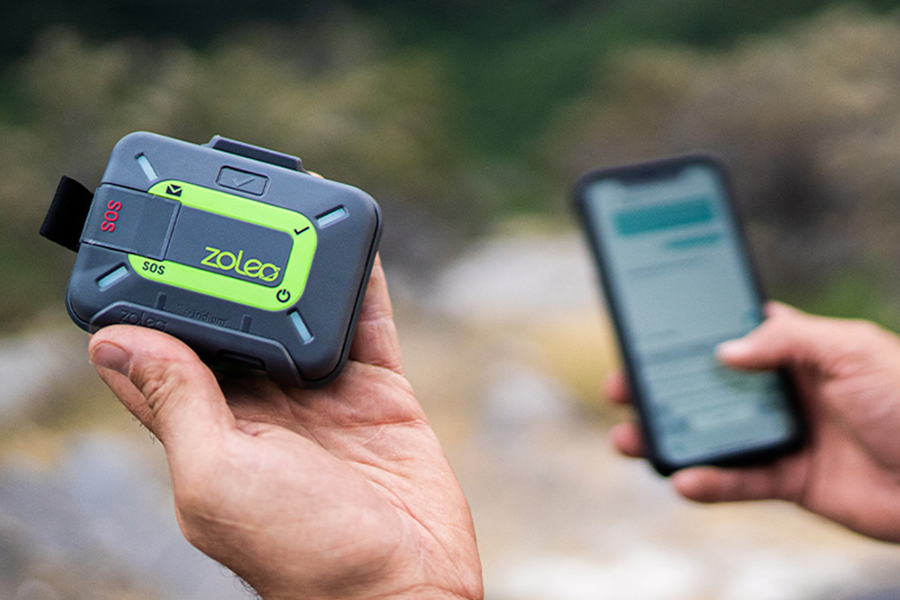
The ZOLEO device connects using an app on your smartphone. Image: Zoleo
ZOLEO
Released onto the market early in 2020, ZOLEO’s Global Satellite Communicator raises the bar on Satellite Messenger devices. This device operates off the cellular and Wi-Fi networks and offers all the traditional satellite device features such as an SOS button and GPS navigation.
However, its messaging capabilities are what truly set it apart from its competitors. ZOLEO has partnered with the Iridium satellite network to enable messages anywhere on the planet! Using the free app on your smartphone, you can send and receive SMS, email, and app-to-app messaging – even when your ZOLEO device is turned off.
Their message functionality is exceptional, reflecting a deep integration with the newest technologies so the messaging experience remains familiar for the smartphone user. It comes with its own Australian SMS number and email, which you can share with your contacts using the check-in button. Unlike other satellite devices that require their antenna to be facing up, ZOLEO simply needs a clear view of the sky.
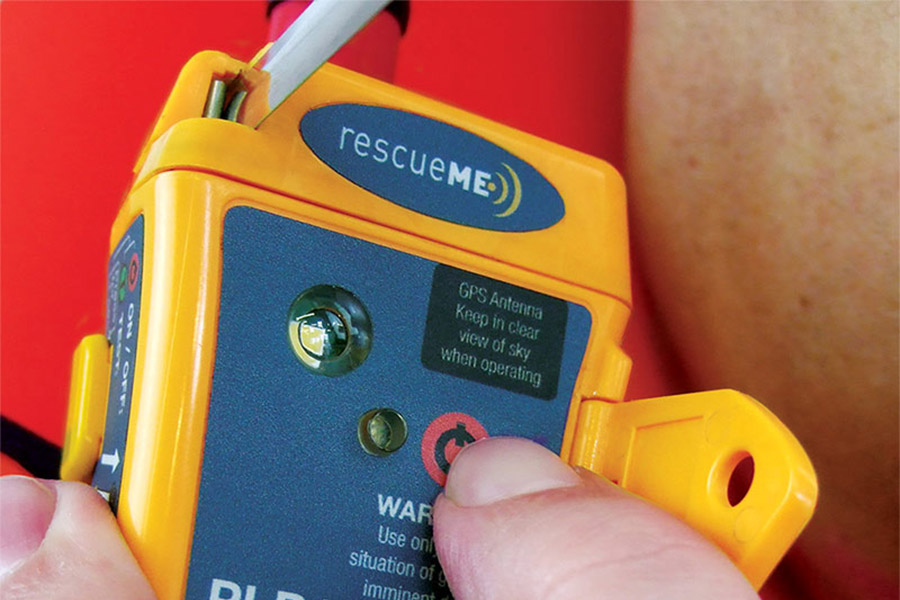
The Ocean Signal RescueMe PLB1 has a waterproof rating of 15-metres for 1-hour. Image: Ocean Signal
Does my device need to float, or be waterproof?
This depends on where you intend to use your device. If you’re going out on the water, one like the Ocean Signal RescueMe PLB1 is probably your best choice.
If you’re a hiker, cycle tourer, or heading off-road, it’s unlikely you’ll need your PLB or Satellite Messenger to have a high waterproof IP rating. Each device differs in its depth/time frame and floatation capabilities, so just go by what makes sense for what you’ll use it for.
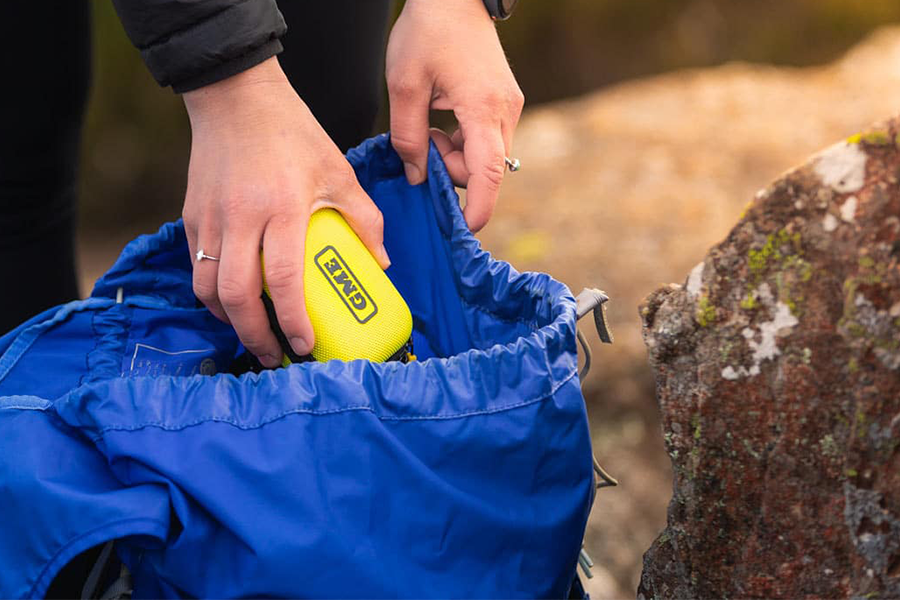
Always test the battery on your device before a trip and check the expiry date on PLBs. Image: ACR
Batteries
PLBs
How long batteries last before their expiry depends on the type of battery used in the model of PLB that you have, but it varies between about 6 -10 years.
You will need to either have the battery replaced by an authorised battery replacement centre, or send it back to the manufacturer when it’s time to replace the battery. If you have activated your device in an emergency, you need to replace the batteries before relying on your PLB again.
If you haven’t sent an alert, you will need to replace the battery before the expiry date listed. This varies, depending on the model. The price of replacing a battery will be different for each beacon, but you can expect it to be at least $150-$200.
Satellite Messengers
These devices generally use Lithium-ion batteries, but that might vary depending on the brand. In terms of battery life, the SPOT, for example, will last about 13 days in SOS mode. You will need to keep batteries on hand out in the field to replace them if necessary.
View the full battery performance table with all the information here on their website.
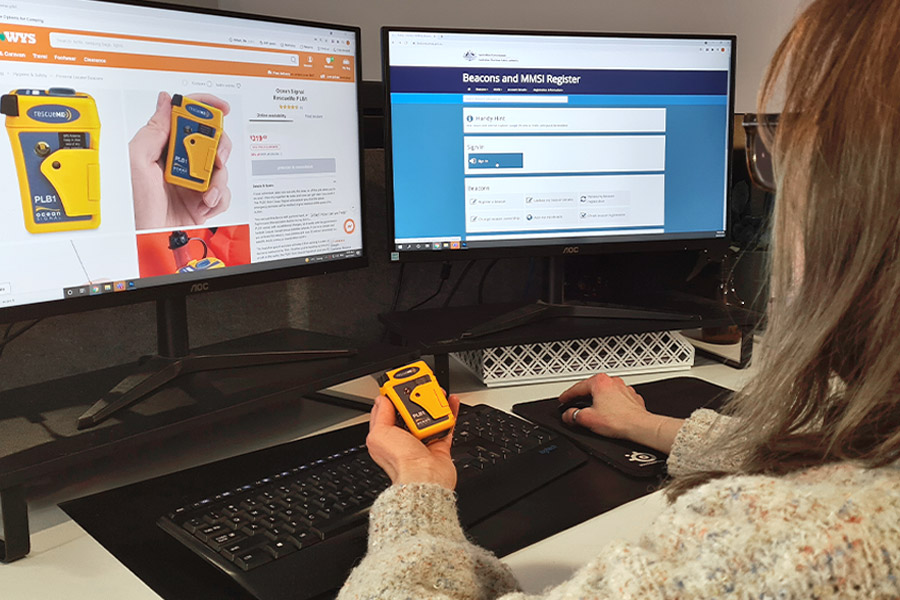
Registering your PLB is a simple and straightforward process.
Fees, Subscription Services, and Registration
PLBs
There are no yearly subscription fees required to use a PLB.
Your PLB will need to be registered/programmed with the Australian Maritime Safety Authority. Registration is vital, as your device will have a unique number. It’s also important to update your details if they have changed, as well as your trip information. This is so that in the event of a rescue, it’s easier for the emergency services to find you.
Satellite Messengers
Satellite Messengers have a monthly or yearly subscription fee, depending on which payment plan you choose. They require you to create an account with the relevant company – for example, SPOT or ZOLEO.
Once logged in, you are able to activate/register your device, choose a subscription plan, and lodge your personal details.

Purchase your emergency device from a reputable dealer. Image: ZOLEO
Does it matter where I buy?
While it may be tempting to grab a bargain from an international seller, it’s recommended by the Australian Maritime Safety Authority that you choose one that complies with Australian standards. You can also check out the list of the PLBs here which meet those Australian standards, for reference.
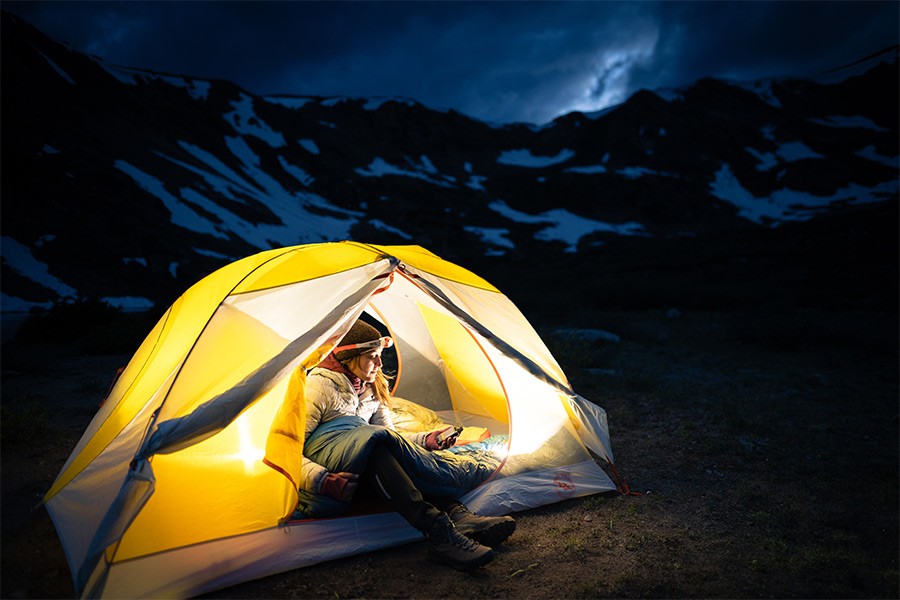
Some devices have global coverage but they still must be registered in the country of purchase. Image: SPOT
PLBs & Satellite Messengers for International Use?
Every PLB uses the same global 406 MHz frequency and has approvals in multiple countries, so these are a great choice for overseas adventures.
They still need to be registered with the Australian authorities – then, if you need to activate it while travelling, the signal is sent to the relevant authorities in your country of travel. The Australian authorities monitor your situation and liaise with the relevant international authorities to ensure you get out of trouble safely.
It’s also important to check with the manufacturer’s website as well as the relevant authority in the country you are visiting, for information on international use and any restrictions.
ZOLEO is also connected to the Iridium satellite network, giving them global coverage.

There are five main points to note when looking to purchase a PLB or Satellite Messenger. Image: ZOLEO
Summary: PLBs & Satellite Messengers
- A messenger device has a yearly fee, while PLBs do not require any.
- All devices need to be registered with your personal details.
- A PLB communicates with government-run satellites, while a Satellite Messenger uses a private network.
- A Satellite Messenger has a check-in and an SOS button, and you can link your progress to an online page too. On the contrary, a PLB has only one rescue function.
- A PLB has a battery life of several years, and replacements must be done by the manufacturer or an authorised centre. On the other hand, you can replace the batteries in a Satellite Messenger yourself – though they need to be checked frequently, especially when in use.
Hopefully, this article answers enough about PLBs and Satellite Messengers that you can choose your own with confidence. More information is available here and, as always, Snowys is happy to help!
Happy adventuring – and stay safe when you’re travelling off the beaten path!
Have you ever had to use a PLB or Messenger Device to be rescued? Let us know your experience in the comments!
When it comes to camping, hiking, travel and adventure – the Snowys team have all the expert advice, guides, and tips on everything outdoors.
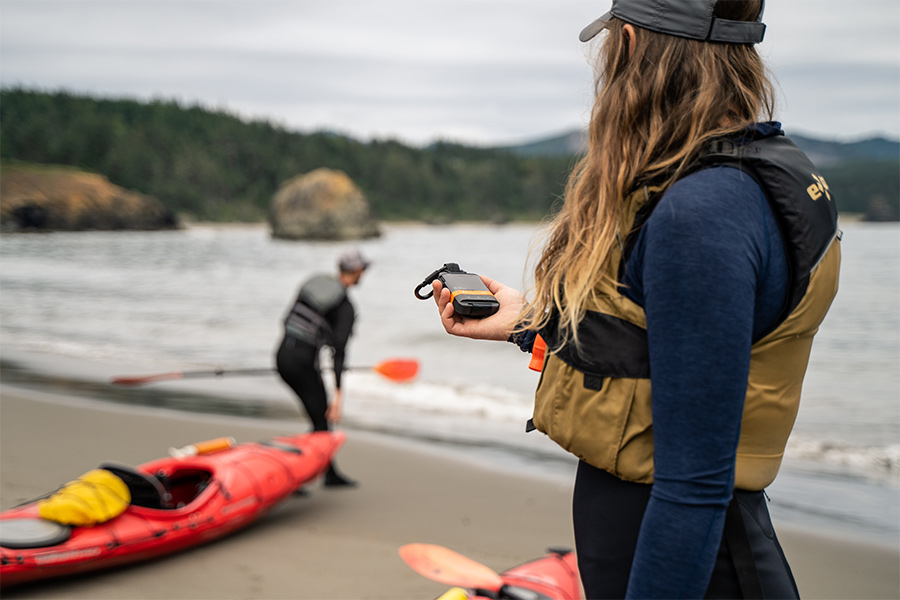
This blog caused me a bit of a panic when I read “Older model PLBs used the 121.5 MHz frequency, however this is no longer detected by satellite and these models are no longer licensed for use.”
I have a GME Accusat on it’s 2nd battery & it’s AMSA registration does not expire till late 2026. I do solo brush walking & kayaking, including coastal & I have never has a notification that this beacon was no longer licensed for use. So, doing some checking I found that satellites use 406 MHz but 121.5 MHz can be used by rescue crews to home in on the precise location. So it seems to me that my PLB is still fine & licensed for use. I think there are some lighter weight & more compact options these days, but my current one is reasonable to keep using as it is still in battery & registered.
Didn’t really appreciate the panic & wasted time taken to check all this though. Maybe that line could have been worded better….
Sorry if we caused you some panic. By ‘older’ models, we are referring to those from before the 406Mhz frequency PLB’s, of which the Accusat is not. I’m pretty sure AMSA would let you know if your PLB wasn’t fit for use. ~ Ben
I’m wondering what charges are incurred if SOS is activated on a Zoleo as it’s an international emergency service.
Hi there Karen, thanks for the message. I’d recommend giving Ep49 – PLB Comparisons a listen, and scroll down to a comment by one of our viewers, Andy Lo. He’s provided some great information. Basically, the SOS will end up with the closest rescue authority to your location. In Australia, the cost of the rescue is covered by the government, but this does not include medical costs.
Hope this helps!
https://beacons.amsa.gov.au/about/how-they-work.asp
Be aware it could easily take days to be rescued via a PLB alert depending on how remote you are – they do *not* automatically send a rescue helicopter for land based PLBs (marine EPIRB is a different matter).
A satphone will generate a much faster response if safety is your main aim.
PLBs indicate that they need a clear view to sky for the GPS to work. Will they work if I needed for an emergency in a forest environment?
It will most likely work through a forest canopy, Brian, but signal quality is dependent on the density of the canopy and there’s no way of knowing if the signal is reaching the satellites. Generally, if you can see the sky through the canopy you’ll be fine, however, if you are deep in a cave or gorge then you really need to get to higher ground before activating your PLB. I hope this helps. ~ Ben
trees, branches, leaves and rocks all impede the signal for a GPS, all devices (handheld navigation, phones, PLB, Messengers etc)
The best place for use is clear line of sight to the sky
Yeah very informational !
These locators are very helpful in any kind of emergency. You can just inform your loved ones and they will help you in emergency.